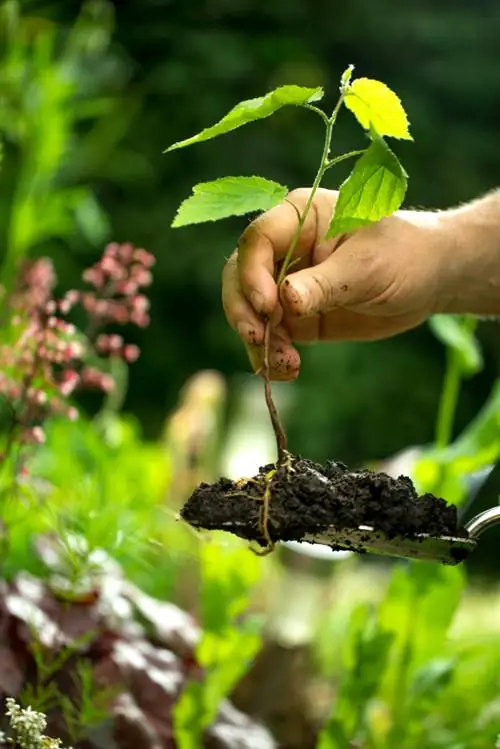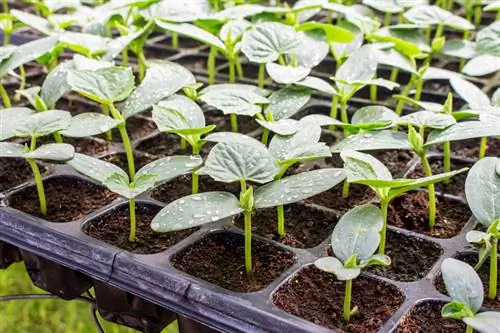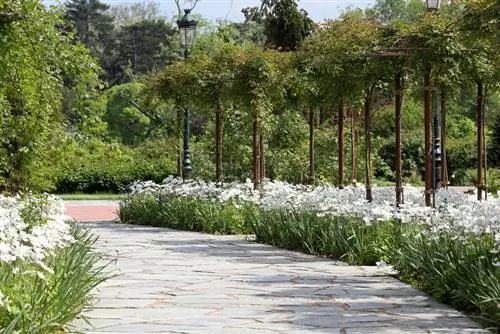- Author admin [email protected].
- Public 2023-12-16 16:46.
- Last modified 2025-01-23 11:20.
A wild hazel, a graft from the garden center or a home-grown cutting - planting a hazelnut is usually not a big hurdle. But what should you pay attention to during the procedure so that no abysses open up later?

How do I plant a hazelnut correctly?
To plant a hazelnut successfully, choose the ideal planting time in autumn, a partially shaded, wind-protected location and deep, well-drained soil. Plant at least two hazelnuts, add compost to the planting hole and water heavily after planting. Protect young plants from frost with a layer of leaves.
When is the ideal planting time?
The hazelnut - regardless of whether it is a hazelnut tree or a hazelnut bush - should be planted or moved outside of its growing season. This is the case in the period before the first frost in autumn (around mid-October) and the beginning of the flowering period in February.
Autumn is best for planting. The young hazelnut then has enough time to root during its resting phase and to get used to the new location until it blooms.
What location requirements does the hazelnut have?
A moderately semi-shady location in a location sheltered from the wind and the hazelnut is satisfied. It can also be planted in a full sun location. Locations on a wall, corner of a house, wall or in the protection of a high coniferous hedge are well suited. The hazelnut copes equally well with high altitudes and valleys because it is extremely insensitive.
As a rule, their soil requirements are easy to meet. It simply cannot cope well with heavy, compacted and wet soil. The subsoil to its roots should at best have the following properties:
- profound
- medium difficulty
- permeable
- slightly acidic to neutral pH value
- humus-rich
- calcareous
- easy
Which neighbors are suitable for you?
Good neighbors for the hazelnut include dog roses, elderberries, early bloomers, wildflowers, catkinseed willows, hostas and bloodcurrants. With the shrub-like plants in this list, it can be easily planted as a mixed hedge, for example.
How should you proceed when planting?
First of all, a generous distance should be maintained from other plants in the area. The hazelnut takes up a lot of space in its location. After a few years it reaches a size of up to 7 m in height and width. If the distance is too small, it will ruthlessly overgrow its neighbors
When and after planting, please note:
- Plant at least 2 hazelnuts (in most cases not a self-pollinator)
- Put compost in the planting hole
- Tie hazelnut trees to a post if necessary
- Watering after planting
- protect young plants from frost with a layer of leaves
Tips & Tricks
When planting, remember that it is difficult to remove an overgrown hazelnut without leaving any residue. You can also use the hazelnut as a privacy screen. It grows extremely quickly and maintains a dense structure even without regular pruning.






